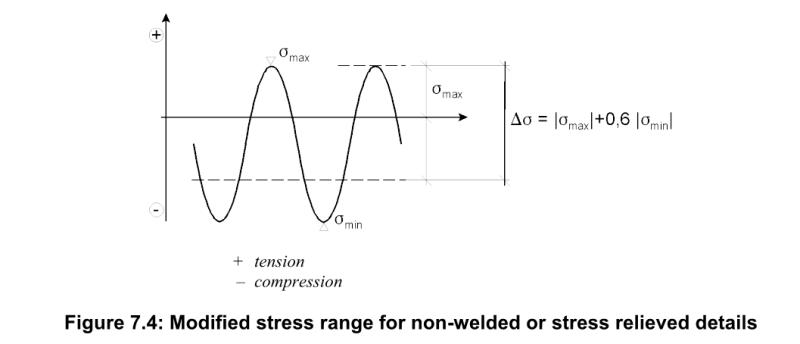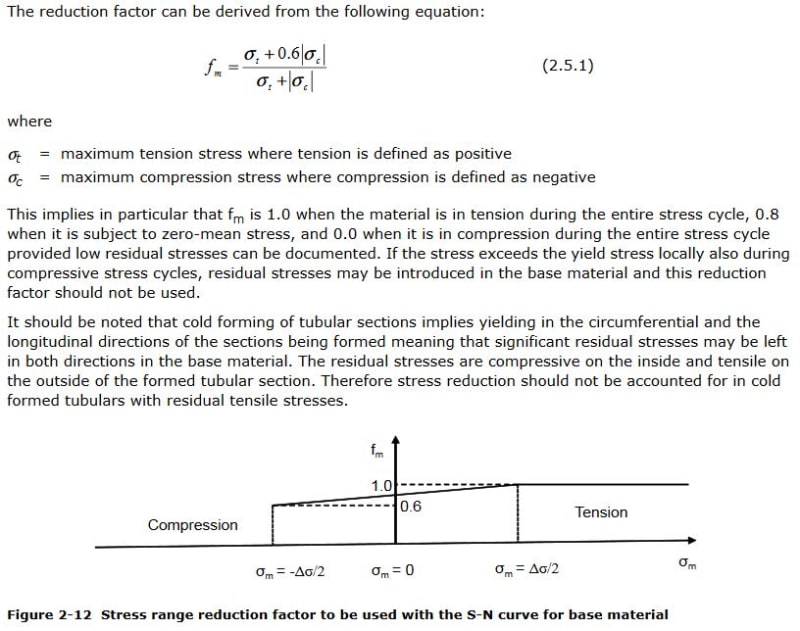siberiankhatru
Mechanical
- Aug 27, 2019
- 6
Bolts are seldom under compressive load, but what if we had an situation, where a non-preloaded bolt was under varying compressive load (load ratio R>1, i.e the loading is fully compressive).
For example, the situation could be a column base connection without grout where the anchor bolts and nuts (and baseplate) carry the compressive load from the column.
Details and FAT classes are presented in the design standards Eurocode 1993-1-9 and DNVGL RP C203 but the details are meant for bolts which are mainly or somewhat under tension. How much better FAT class would a non-preloaded bolt have if the load range was fully compressive?
For example, the situation could be a column base connection without grout where the anchor bolts and nuts (and baseplate) carry the compressive load from the column.
Details and FAT classes are presented in the design standards Eurocode 1993-1-9 and DNVGL RP C203 but the details are meant for bolts which are mainly or somewhat under tension. How much better FAT class would a non-preloaded bolt have if the load range was fully compressive?


